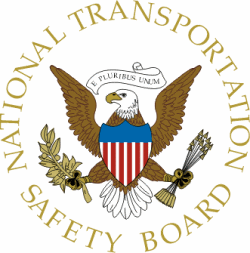Board Finds That Poor Maintenance Started The Accident Chain
Which Resulted In Four Deaths
 A chartered business jet crashed at
a South Carolina airport 18 months ago because of the operator's
inadequate maintenance of the airplane's tires and the decision by
the captain to attempt a high-speed rejected takeoff, which went
against standard operating procedures and training, the NTSB
determined Tuesday.
A chartered business jet crashed at
a South Carolina airport 18 months ago because of the operator's
inadequate maintenance of the airplane's tires and the decision by
the captain to attempt a high-speed rejected takeoff, which went
against standard operating procedures and training, the NTSB
determined Tuesday.
On September 19, 2008, at 2353 EDT, a Bombardier Learjet Model
60 (N999LJ) operated by Global Exec Aviation and destined for Van
Nuys, California, overran runway 11 during a rejected takeoff at
Columbia Metropolitan Airport. After the airplane left the
departure end of runway 11, it struck airport lights, crashed
through a perimeter fence, crossed a roadway and came to rest on a
berm. The captain, the first officer, and two passengers were
killed; two other passengers were seriously injured.
The investigation revealed that prior to the accident the
aircraft was operated while the main landing gear tires were
severely underinflated because of Global Exec Aviation's inadequate
maintenance. The underinflation compromised the integrity of the
tires, which led to the failure of all four of the airplane's main
landing gear tires during the takeoff roll.
Shortly after the first tire failed, which occurred about 1.5
seconds after the airplane passed the maximum speed at which the
takeoff attempt could be safely aborted, the first officer
indicated that the takeoff should be continued but the captain
decided to reject the takeoff and deployed the airplane's thrust
reversers. Pilots are trained to avoid attempting to reject a
takeoff at high-speed unless the pilot concludes that the airplane
is unable to fly; the investigation found no evidence that the
accident airplane was uncontrollable or unable to become
airborne.
The tire failure during the takeoff roll damaged a sensor, which
caused the airplane's thrust reversers to return to the stowed
position. While the captain was trying to stop the airplane by
commanding reverse thrust, forward thrust was being provided at
near-takeoff power because the thrust reversers were stowed. The
Safety Board determined that the inadvertent forward thrust
contributed to the severity of the accident.
The Safety Board also found that neither the Federal Aviation
Administration nor Learjet adequately reviewed the Airplane's
design after a similar uncommanded forward thrust accident that
occurred during landing in Alabama in 2001. While the modifications
put into place after the Alabama accident provided additional
protection against uncommanded forward thrust upon landing, no such
protection was provided for a rejected takeoff.
"This accident chain started with something as basic as
inadequate tire inflation and ended in tragedy," said NTSB Chairman
Deborah A.P. Hersman. "This entirely avoidable crash should
reinforce to everyone in the aviation community that there are no
small maintenance items because every time a plane takes off, lives
are on the line."
The safety recommendations that the NTSB made to the Federal
Aviation Administration as a result of this investigation are:
provide pilots and maintenance personnel with information on the
hazards associated with tire underinflation, including the required
intervals for tire pressure checks, and allow pilots to perform
pressure checks in air taxi operations to ensure that tires remain
safely inflated at all times; require tire pressure monitoring
systems for all transport category airplanes; identify and correct
deficiencies in both Learjet's thrust reverser system safety
analysis and the FAA's design certification process to ensure that
hazards encountered in all phases of flight are mitigated; require
that simulator training for pilots who conduct turbojet operations
include opportunities to practice responding to events other than
engine failures near takeoff speeds; require that pilots who fly
air taxi turbojet operations have a minimum level of pilot
operating experience in an airplane type before acting as
pilot-in-command in that type; and require that airplane tire
testing criteria reflect the loads that may be imposed on tires
both during normal operating conditions and after the loss of one
tire.
 Airborne 06.30.25: US v ADS-B Misuse, Natl STOL Fire, Volocopter Resumes
Airborne 06.30.25: US v ADS-B Misuse, Natl STOL Fire, Volocopter Resumes Aero-News: Quote of the Day (07.06.25)
Aero-News: Quote of the Day (07.06.25) ANN's Daily Aero-Linx (07.06.25)
ANN's Daily Aero-Linx (07.06.25) Classic Aero-TV: Portrait of the Army Aviation Heritage Foundation
Classic Aero-TV: Portrait of the Army Aviation Heritage Foundation Airborne-NextGen 07.01.25: Volocopter Returns, B23 Energic, Iran Tech In UAVs?
Airborne-NextGen 07.01.25: Volocopter Returns, B23 Energic, Iran Tech In UAVs?



